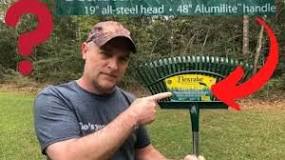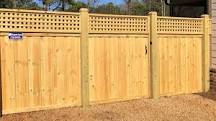If you don’t cut a hay field, you risk a whole bunch of issues that can affect not just the grass but also the soil, wildlife, and your future harvests. Let’s dive into what happens when you let that hay grow wild.
Overgrowth and Weeds
First off, if you skip cutting, the grass will just keep growing. Sounds good, right? Well, not really.
Competition with Weeds
When grass gets too tall, it creates a perfect environment for weeds to take over. Weeds thrive in overgrown areas and can outcompete your grass for nutrients and sunlight. Before you know it, your once-thriving field could be a jungle of unwanted plants.
Nutrient Depletion
Tall grass means more competition for nutrients in the soil. If you don’t cut the hay, the grass will use up all the good stuff in the ground, leaving it depleted for future growth. This can lead to poor-quality hay and lower yields next season.
Impact on Soil Health
Letting a hay field go unchecked can also mess with soil health.
Soil Compaction
When grass grows too tall and dense, it can lead to soil compaction. This makes it harder for water and air to penetrate the ground, which is crucial for healthy roots. Compacted soil can lead to poor drainage and even erosion.
Loss of Microbial Activity
Healthy soil is full of microbes that help break down organic matter and recycle nutrients. An overgrown field can disrupt this balance, leading to a decline in microbial activity. Without these little helpers, your soil won’t be as fertile.
Wildlife Habitat
An uncut hay field might seem like a haven for wildlife at first glance.
Increased Habitat for Pests
Sure, some animals might enjoy the tall grass, but so do pests! Overgrown fields can become breeding grounds for insects like ticks and mosquitoes. This could lead to problems not just for your crops but also for nearby livestock and even humans.
Disruption of Ecosystems
On the flip side, certain wildlife that relies on open fields may struggle if they can’t find enough space to thrive. It’s all about balance—too much overgrowth can throw local ecosystems out of whack.
Future Harvests
Let’s not forget about what this means for your future hay harvests.
Reduced Quality of Hay
If you don’t cut your hay regularly, the quality will drop significantly. Overripe grass becomes tough and less nutritious. When you finally do decide to cut it, you might end up with hay that’s not worth much at all.
Timing Issues
Waiting too long to cut can also mess with your timing for future crops. If you’re late in harvesting one crop, it could push back planting times for the next one, creating a domino effect that messes up your entire farming schedule.
Conclusion
So there you have it! Not cutting a hay field isn’t just about letting it grow wild; it comes with a whole host of problems that can affect everything from soil health to future harvests. Keeping those fields trimmed isn’t just good practice; it’s essential for maintaining a healthy ecosystem and ensuring high-quality yields.
FAQ
What is the best time to cut hay?
The best time to cut hay is when the grass is in its flowering stage but before it goes to seed. This usually happens in late spring or early summer depending on your location.
Can I let my hay field grow longer for more yield?
While it might seem tempting to let your hay grow longer for more yield, waiting too long can actually reduce quality and lead to issues like nutrient depletion and weed competition.
What are some signs that my hay needs cutting?
Look out for signs like tall grass (over 12 inches), yellowing leaves, or an increase in weeds. If you start seeing these signs, it’s time to grab that mower!
How often should I cut my hay field?
Generally, cutting every 4-6 weeks during the growing season is ideal. This helps maintain healthy growth and prevents weeds from taking over.







